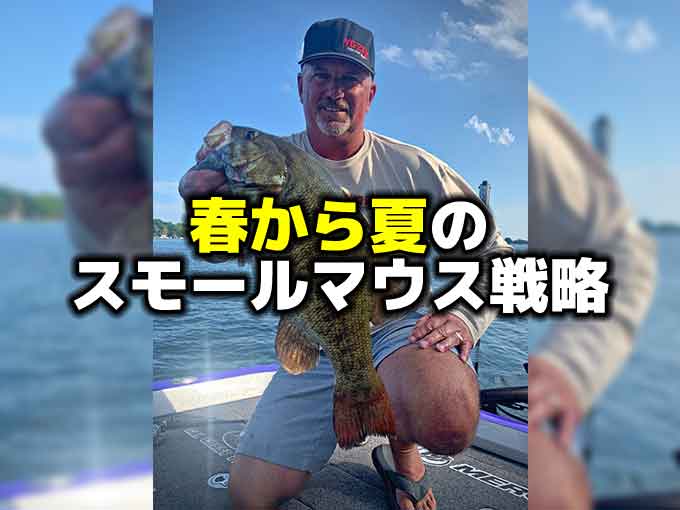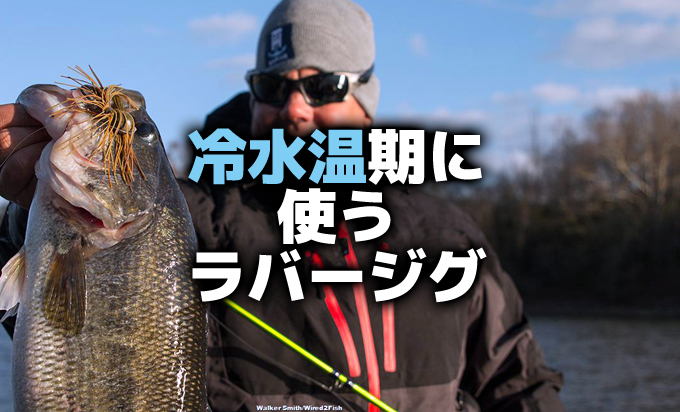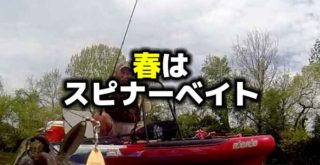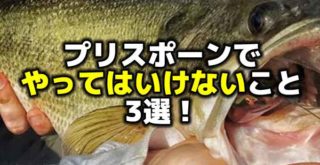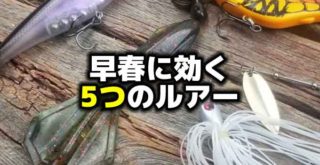夏のスモールマウスバスの動き
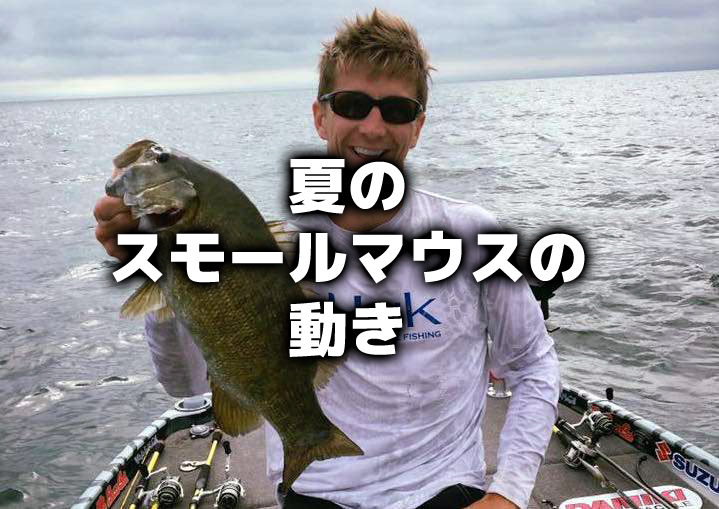
Photo by bassmaster.com
こんにちは!店長の小山です!
本日は海外サイトより、”Summer smallmouth movement”という記事を引用してご紹介いたします。
引用先:bassmaster.com”Summer smallmouth movement”July 21, 2017(海外サイトです)
スモールマウスバスの夏。みなさんはどんなイメージをお持ちでしょうか。
野尻湖では、アフタースポーンの頃から、梅雨明けの虫パターンまではバスの食い気も絶好調で、数もサイズもそこそこ出てくれる傾向があるのですが、お盆を過ぎたころ、虫パターンの終了とともに、バスのルアーへの反応が悪くなってきます。
ハッキリ言えば、私もそうなんですが「夏から釣れなくなる」というイメージをお持ちの方が多いのではないでしょうか。
これにはいくつが原因となることがあるのですが、この記事では、アメリカバスマスターの若手イケメンプロ、チャド・ピプキン氏が、そんな夏のスモールマウスバスについて語ってくれています。
早速読んでみましょう。
夏のスモールマウスバスの動き
It’s often said with much frustration that smallies disappear after they spawn and move off the beds. That’s a little bit true, I suppose, but a more accurate description of what they do is roam out in deep water. It’s more like they’re everywhere than it is that they’re nowhere. And, what they do is site specific.
In the deeper Great Lakes and some of the bigger, deep lakes in the North they tend to act almost like lake trout. By that I mean that they feed on smelt and are often found at extremely deep depths. Finding them between 40 and 60 feet is common, often over water that’s between 80 and 100 feet deep.
It’s tough to find them at those depths. That’s why so many anglers think they’ve disappeared or traveled to parts unknown. However, if you adjust your SONAR properly and spend the time it takes to find them you can catch them. They are feeding.
In shallower places, like the western end of Lake Erie they seem to relate more to structure. The offshore rock piles in Erie are legendary for producing large numbers of big smallmouth when the weather is miserably hot. My guess is that those fish are generally resident bass. They move into those places and stay until they’ve eaten everything in sight.
If you are lucky, and a mega school moves in, you’ll know it immediately. You’ll catch a bass on almost every single high spot, and they’ll all look perfect — not a mark on them.
At times, though, it looks like they move from one rock pile or structure break to another. In my mind they’re moving back and forth to take advantage of whatever’s there to eat. In most cases that’ll be gobies.
スモールマウスは、スポーニングを終えベッドからいなくなると釣れなくなってしまうという多くの不満をよく耳にします。それは間違ってはいないと私も思うのですが、正確に言えば、ディープの方へ行ってしまうということです。スモールがどこにもいなくなってしまうということは、どこかにいるということです。そして、彼らは特定の場所にいるのです。
五大湖やアメリカ北部の大きなディープレイクでは、彼らはレイクトラウトのように行動する傾向があります。これは、彼らがワカサギをエサとしてフィーディングするため、ディープレンジで発見されることを意味します。水深24~30メートルの12~18メートルの中層で見つかることも一般的です。
そういったディープでスモールを見つけるのは難しいのです。そういうわけで、多くの釣り人は、彼らが姿を消したり、未知の部分へ行ってしまったと思っています。しかし、魚探を適切に調整して、見つけるための時間を費やすと、その姿を捕らえることができます。彼らはフィーディングをしているのですから。
シャローレイクでは、エリー湖のように、彼らは地形変化に関連しているようです。天気がひどく暑い時に、エリー湖の沖合のロックパイルにビッグスモールがわんさか集まるのはもはや伝説的ですが、私の意見では、それらの魚はおそらく居着きのバスであると言えます。そこに来たら、見えるものすべてを食べ尽くすまでそこにるのですから。
運が良ければ、大きな群れがやってきます。そうなればすぐわかります。本日のクライマックスとばかりにバスを釣りまくり、すべてを釣り切ります – 跡形も残らないほどに。
しかし時には、彼らが1つのロックパイルまたは地形変化から別のストラクチャーに移動しているようにも見えます。私が思うに、彼らは食べるものを追ってあちこちに動いています。ほとんどの場合、それはゴビー(ハゼ系のベイト)でしょう。
In the shallower, natural lakes — again, in the northern part of our country — it seems like they do the same thing except that they don’t have the deep water available. They’re likely to move with the forage but in water that’s a lot shallower. The western part of Lake Erie may not be as deep as the eastern part but it’s still deeper than many natural lakes. You’ve heard it a thousand times: Deep is a relative concept.
I’m not going to say much about smallmouth in the lower Midwest and upper South because I haven’t spent much time there fishing for them. I won’t pretend like I have experience in what they do. My lack of knowledge notwithstanding, however, it seems reasonable that they would react pretty much the same after their spawn. They’re smallmouth bass. I’d expect them to act like it.
What all the movements I’ve described have in common is that summer smallmouth are forage related. I think that’s just as true of the shallow, “rock pile” bass as it is of the deep, “smelt” bass or the shallow natural lake bass. And because they’re relating to forage they are going to be moving. Don’t expect to catch them two or three days in a row in the same spot.
If you’re looking for hot weather smallmouth, I suggest you start by analyzing the water you’re fishing. You need to know its general depth, basic structure and what forage is available. Once you’ve done that you can start your open water search, and it’s likely you’ll spend more time staring at your SONAR screen than you will fishing. When you do find them, though, it’ll be a time to remember.
アメリカの北部でも、浅いナチュラルレイクにおいては、ディープエリアがあるということを除けば、やはり同じことをするようです。彼らはベイトを追って移動する可能性が高いのですが、水深はかなり浅い。エリー湖の西部は東部ほど深くないかもしれませんが、それはまだ多くの天然湖よりも深いのです。あなたも何千回と聞いたことがあるはずです、ディープとは相対的な概念であるということを。
中西部と南部の低地に住むスモールマウスについては、私はあまり経験がないので、言及できません。そのスモールがどう動いているかを知っているかのようには振る舞いません。しかし、私の知識が足りないにもかかわらず、彼らはスポーニングの後はほとんど同じように行動するはずなのです。スモールはスモールです。私は彼らがそのように行動すると期待しています。
私がここに書いたスモールの動きですべてに共通しているのは、夏のスモールマウスはベイトに依存しているということです。私はそれがシャローの「ロックパイルに着く」バスの真実と同じだと思います。それはディープの「ワカサギ」バスまたは浅いナチュラルレイクのバスだろうとです。彼らはベイトに関連して動いているでしょう。同じ場所で2〜3日連続して釣り上げることを期待しないでください。
あなたが暑い季節のスモールマウスを探しているなら、あなたが釣っているフィールドを分析することから始めることをお勧めします。あなたは、その一般的な深さ、基本的な地形変化、および生息しているベイトを知る必要があります。それを済ませたら、オープンウォーターのサーチを開始できます。それは釣りをするよりも魚探の画面を見ている時間の方が長くなります。あなたがそれらを見つけたら、そこを覚えておいて下さい。
いかがでしたか。
サラッと言ってのけましたが、それがなかなか大変なんですよね…(泣)
釣りをするより魚探掛けの時間の方が長いなんて、酷な話です(笑)でも、そうなんですよね。私の場合でも、野尻湖では、大体のエリアに目星を付けたら、魚探掛けをしてから、釣りを始めます。いい感じの群れを見つけるのに5分で済むこともあれば、30分以上かかることもあります。
そして、アフター以降の食い気のあるバスが食い気がなくなったかと言えばそうではなく、ずーっとワカサギを食っているようです。
だからといってルアーへの反応がいいわけでもなく、ワカサギに夢中でこっちのルアーには目もくれないという印象がありまして、本当に厄介な連中なんですけどね(笑)
ただ、その日の当たりパターンを見つけてしまえば、ここに書かれているように、連発もあります。私ですら、連発することがあるんです。
もし、これを読んでおられる方で、夏の野尻湖にコテンパンにやられてしまってこりごり、なんていう経験がある方がいらっしゃるようでしたら、これを参考に再チャレンジされてみてはいかがでしょうか。
ボートが減って貸切状態の野尻湖で連発するのは、気持ちのいいものですよ。
それでは、また。
毎度ありがとうございます!



